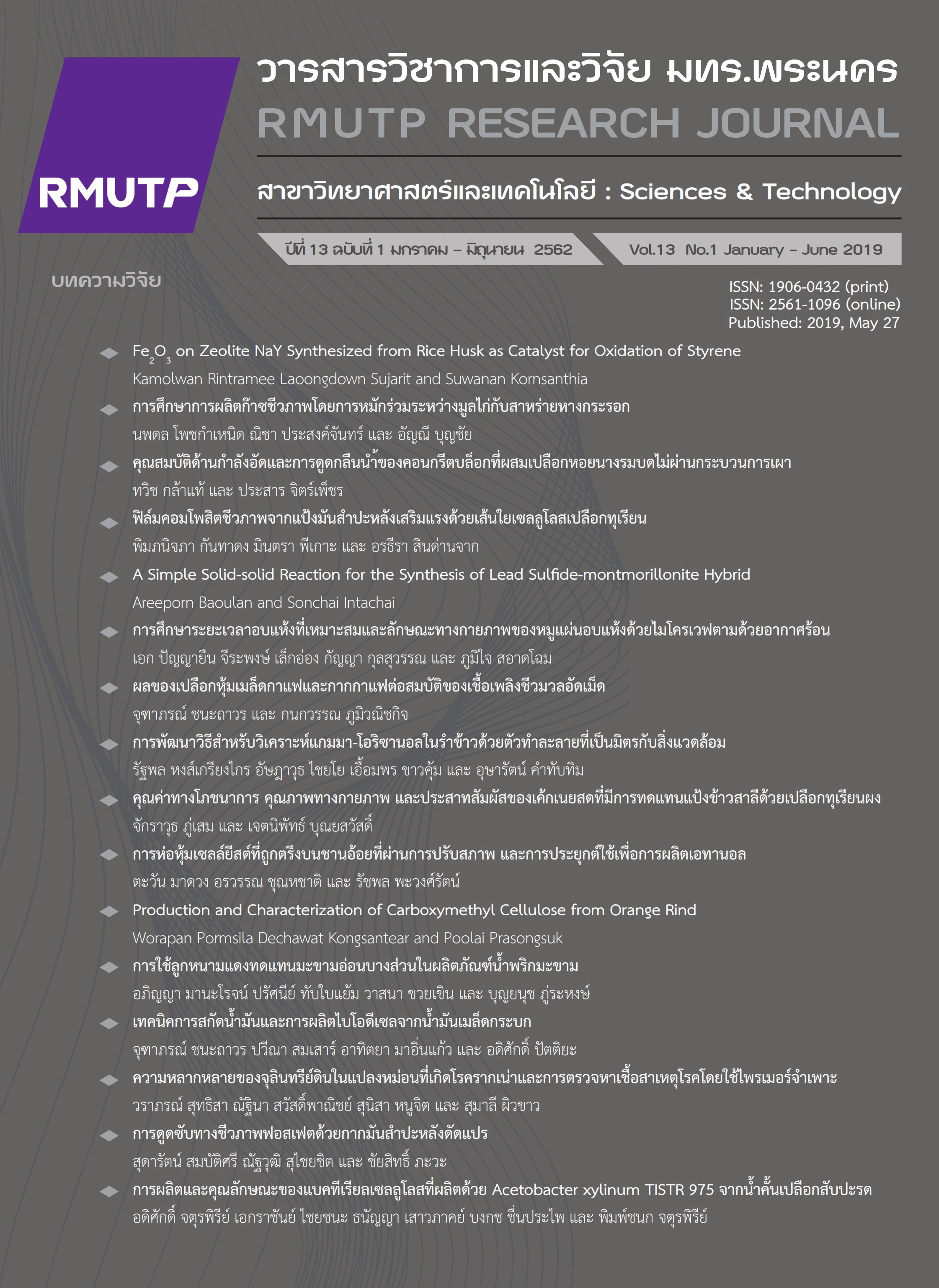Production and Characterization of Carboxymethyl Cellulose from Orange Rind
Main Article Content
Abstract
It is known that orange rind is often discarded as garbage. This research examines the production of carboxymethyl cellulose (CMC) from orange rind. Cellulose was extracted from orange rind (2.0 g) through alkalization. The cellulose was extracted using 1.0 M NaOH at 80 ± 5oC for 60 min. The maximum yield of cellulose was obtained under this condition. The extracted cellulose was then alkalized and etherified to CMC using NaOH and chloroacetic acid after bleaching with H2O2. The resulting CMC was characterized through Infrared spectroscopy to determine the functional group of CMC. The presence of carboxyl group (COO-) at a wavenumber of 1,586 cm-1 in the IR spectrum, confirmed the conversion of cellulose to CMC. The surface morphology was also carried out through the SEM technique and the elemental analysis was performed using an EDX method. In addition, the resulting CMC product was coated as a film on banana to observe for various reactions.


